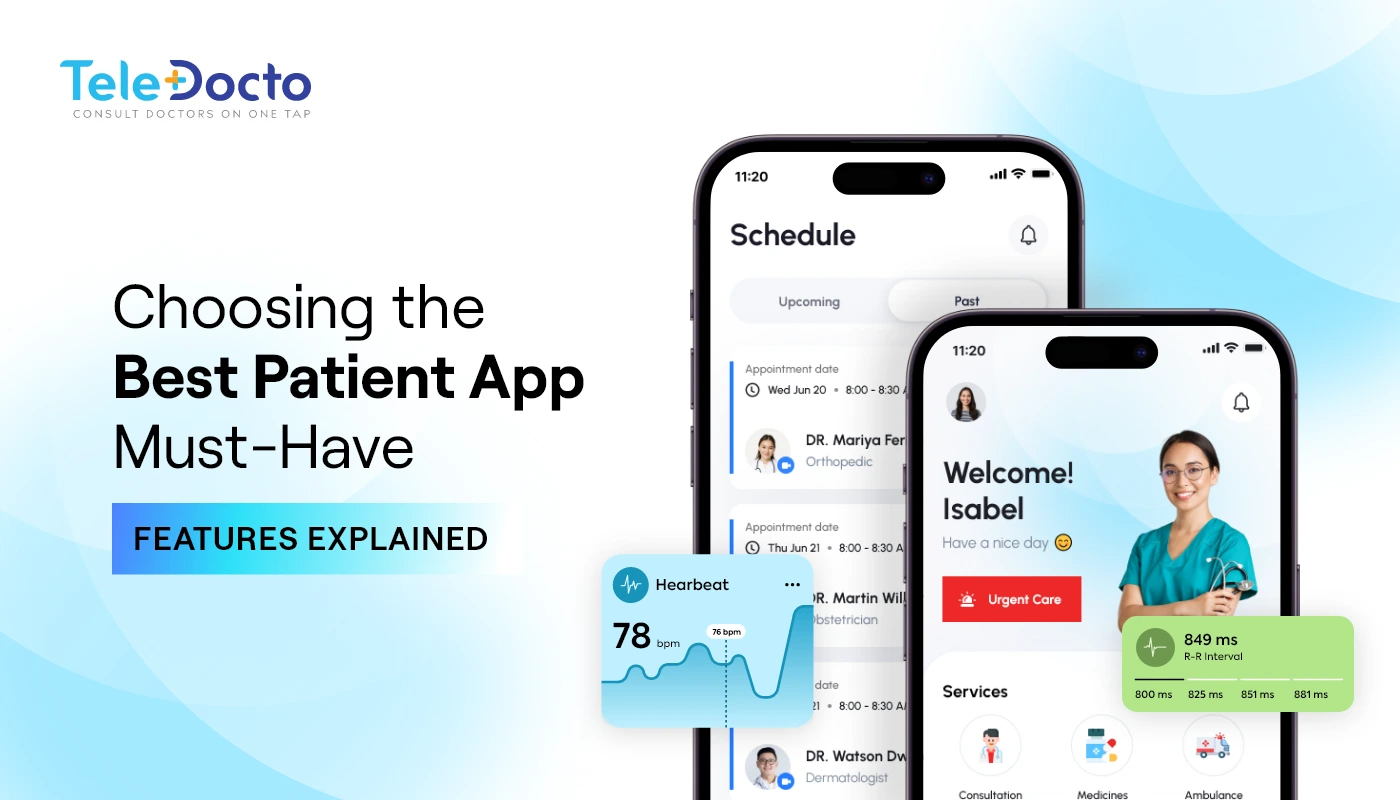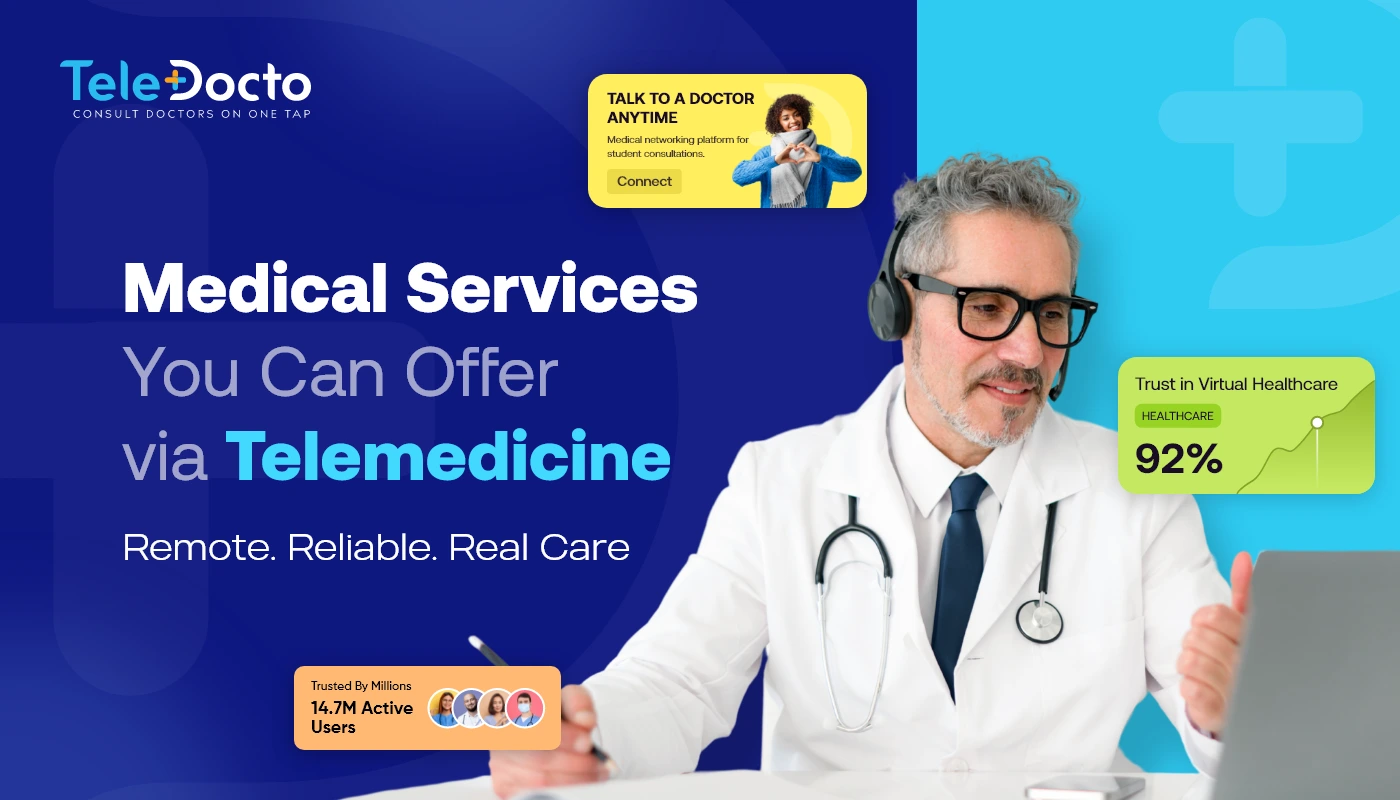
What Are Key Features to Look For in a Good Patient App?
Patients are no longer willing to stand in long queues or make endless calls just to schedule an appointment or check test results. A patient portal app changes this dynamic, putting essential healthcare services right into patients’ hands and making communication and care management seamless. It gives patients the same level of simplicity and ease they’ve come to expect from other industries.
But delivering that kind of smooth, connected experience takes more than just a good interface. Modern patient health monitoring applications must integrate with EHR systems, remote monitoring tools, and insurance platforms to truly meet today’s healthcare standards. The healthcare automation and integrated solutions allow for the migration of patients’ data across systems, enhancing diagnosis accuracy, treatment planning, and overall care quality.
Choosing the right functionalities during healthcare mobile app development ensures that every touchpoint—from booking a consultation to tracking recovery—is designed with the patient in mind. That’s why, these apps are made seamless, intuitive, and empowering.
How the Right Features of Patient App Transform Patient Care
Every function within a patient app is an opportunity to either simplify or complicate a patient’s journey. Good design reduces friction, saves time, and encourages patients to stay actively involved in their care plans.
Recent studies show that apps designed with patient-centric features can improve engagement rates by 35% and boost treatment compliance by 25%. Patients who feel more in control of their health journey tend to be more loyal and satisfied—and that’s where feature choices make all the difference.
Must-Have Features in a Modern Patient App
Here are the top features that a modern patient app should have—
1. Easy Appointment Booking & Scheduling
Appointment management remains one of the top reasons why patients interact with healthcare apps. A good patient app should allow users to find available tracks, book consultations and refurbishment of appointments without any problems. An intuitive calendar interface showing real-time medical, automated affirmations and reminders can reduce non-show rates drastically. Synchronization with existing patient scheduling software ensures that hospital front desks also remain updated in real time, preventing double orders or confusions.
Key Elements:
- Real-time slot availability
- Automated reminders and confirmations
- Easy cancellation and rescheduling options
2. Secure Patient Login & Access
Patients share sensitive health data on apps, and they deserve the highest levels of protection. The login experience must combine ease of use with robust security. Using multi-factor authentication (MFA) and role-based access control helps ensure that users can only see their data—nothing more, nothing less. Working with HIPAA-compliant app development standards also gives both patients and providers peace of mind that data breaches are unlikely.
Key Elements:
- Encrypted login and session handling
- MFA and secure password protocols
- Compliance with HIPAA and GDPR
3. In-App Messaging & Video Consultations
Communication doesn’t stop at the clinic door anymore. Patients need quick ways to reach their doctors without booking an entire appointment every time. Secure, in-app messaging and video consultations bridge this gap, allowing patients to discuss minor concerns, get follow-ups, or request advice remotely. Integrating these tools directly into the app also reduces call center loads and improves doctor efficiency.
Key Elements:
- Secure, encrypted chat
- Instant notifications for doctor replies
- Video conferencing with record-keeping
4. Access to Health Records & Test Results
Today’s patients want transparency. Providing them with instant access to their medical histories, lab results, prescriptions, and doctor notes builds trust and empowers them to take active roles in their healthcare.
Proper EHR/EMR integration is critical here. Patients should be able to search, download, and share their information easily, without waiting for a call back from the clinic.
Key Elements:
- Health timelines with visit and treatment history
- Easy document download and sharing options
- Secure storage of sensitive medical data
5. Smart Notifications & Medication Reminders
Skipping medicines is a big problem in healthcare. A smart patient app makes it easier by sending reminders for taking pills, getting vaccinations, booking follow-up visits, and more. It doesn’t just stop at reminders — if a patient keeps missing doses, it can alert the doctor or remind the patient to refill their prescription on time.
Key Elements:
- Dosage tracking and smart pill reminders
- Push notifications for appointments and tests
- Intelligent follow-up prompts
6. Real-Time Health Tracking
Health changes every day—and patient apps should keep up. Real-time tracking lets patients enter vital signs manually or pull data from devices like Fitbits, Apple Watches, or glucose monitors. With easy-to-read dashboards showing health trends over time, patients stay more involved in their care, and doctors can catch any issues sooner.
Key Elements:
- Wearable device integrations
- Manual vitals input options
- Visual graphs and health summaries
7. Billing, Insurance & Payment Support
Managing healthcare finances is a big part of the patient experience, but it often gets overlooked. Letting patients view bills, file insurance claims, and make payments right through the app makes everything easier. Tools like co-pay calculators, digital invoices, and insurance upload options cut down the paperwork and help patients stay on top of their healthcare costs.
Key Elements:
- In-app payment gateways
- Insurance management tools
- Automated co-pay estimators
8. Analytics Dashboard (For Admins or Patients)
A good healthcare app should help both patients and providers. Built-in analytics can track how patients use the app, how often they stick to treatments, and when they book appointments—giving providers insights to improve care. At the same time, patients can use dashboards to track their health progress, stay on top of medications, and see important upcoming milestones.
Key Elements:
- Customizable patient and admin dashboards
- Trend analysis on app usage and health metrics
- Integration with third-party reporting tools
How These Features Improve Patient Engagement & Operational Efficiency
Investing in feature-rich apps today builds a foundation for smarter, more responsive healthcare tomorrow. As in, features aren’t just checkboxes. Every smart function added to the app strengthens patient engagement and streamlines healthcare management. Appointment reminders lower no-shows, real-time communication reduces hospital readmissions, and easy billing systems cut administrative bottlenecks.
The result?
- Higher patient satisfaction.
- Lower operational costs.
- Better health outcomes.
Choosing the Right Healthcare App Development Partner
Building a healthcare app is about understanding human lives and care journeys, and using smart technologies for improved outcomes. Choose a partner who understands healthcare software development inside out.
Look for a team that can ensure:
- HIPAA and GDPR compliance
- Smooth integration with hospital systems
- Scalability for growing user bases
- Security-first architecture
- Real-world experience building telemedicine and patient engagement solutions
Final Thoughts
A great patient app brings healthcare closer to patients—making access faster, communication easier, and care better managed.
By carefully selecting the right features and ensuring strong security standards, providers like TeleDocto can deliver not just digital services, but meaningful healthcare experiences.
Frequently Asked Question
A patient app is a mobile platform that lets patients manage appointments, access medical records, communicate with doctors, and handle billing—all in one place. Hospitals use apps like Teledocto to make healthcare more accessible, reduce administrative tasks, and improve patient satisfaction.
A strong patient app needs secure login, easy appointment booking, in-app messaging, access to health records, billing and insurance support, and integration with wearable devices for remote monitoring.
Teledocto keeps patients engaged by offering appointment reminders, real-time doctor communications, easy access to medical history, and personalized health insights—encouraging patients to stay on top of their care journey.
Yes. If a patient app handles personal health information (PHI) in the U.S., it must meet HIPAA standards to ensure patient privacy and data security.
Definitely. Teledocto can seamlessly connect with hospital EHRs, billing software, scheduling tools, remote monitoring devices, and insurance platforms for a fully streamlined experience.
Building a full-featured, secure patient app like Teledocto typically takes around 4 to 8 months, depending on the complexity, integrations, and customization needs.
Recent Blogs

Telemedicine has changed the way how patients connect with doctors. From routine check-ups to specialist consultations, more people now expect healthcare to be just a click away. But for hospitals, clinics & startups running a telemedicine platform, the real challenge isn’t just about having the technology. It’s about having enough qualified, licensed providers to meet […] Read more

Going to the doctor’s clinic is often challenging due to long travel distances, waiting times, and crowds there! It clears that the way traditional healthcare delivery was managed, has certain limitations. Enter telemedicine; not as a replacement, but as a modern upgrade to the healthcare department. From a general consult to specialist care, telemedicine has redefined […] Read more

Great design begins with understanding and research. Addressing user needs is crucial in starting a new project or revamping an existing one! Skipping user experience (UX) research early on can lead to expensive mistakes down the road. In healthcare, this step becomes even more critical—it ensures your product is user-friendly and avoids frustrating UX issues. […] Read more